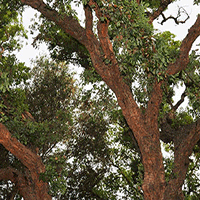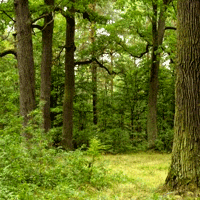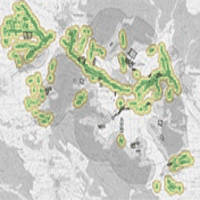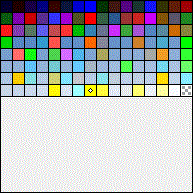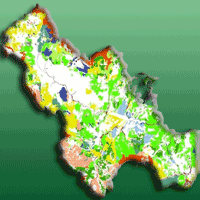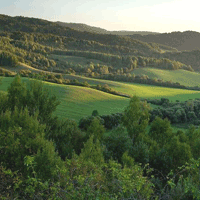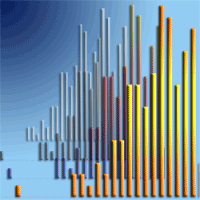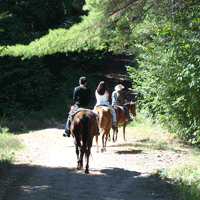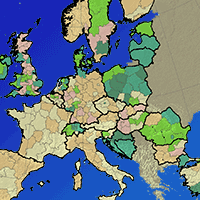
Forest certification map of Europe
Mauro Maesano (1) , Marco Ottaviano (2), Gun Lidestav (3), Bruno Lasserre (2), Giorgio Matteucci (4), Giuseppe Scarascia Mugnozza (5), Marco Marchetti (2)
iForest - Biogeosciences and Forestry, Volume 11, Issue 4, Pages 526-533 (2018)
doi: https://doi.org/10.3832/ifor2668-011
Published: Aug 01, 2018 - Copyright © 2018 SISEF
Technical Reports
Abstract
Forests cover nearly 40% of European land, with different country percentage and patchy distribution. The European forestry sector highlights that forest areas have different ownership: private (by firms, individual, or organizations) and public (State, communities or municipalities). The number of forestry holdings, size of landholding, and ownership types influence and drive forest management, governance and various other socio-economic linked issues. Moreover, forest owners determine management objectives and policies which influence the application of Sustainable Forest Management (SFM) practices. Several tools were developed to promote SFM, including forest certification. Numerous forest certification schemes are present across the world but the Forest Stewardship Council (FSC) and the Programme for the Endorsement of Forest Certification (PEFC) are those prevalent. However, a map of certified forests is lacking, although mapping would be essential to locate the percentage of forest that are certified to be sustainably managed. The study mapped forest certification across 43 European states, according to 499 FSC and 284 PEFC reports and assessed the proportion of certified forest area on public and private land and the rate of increase. This research was carried out collecting information on European certified forest companies/owners and locating geographically their forests at sub-national level (regions, NUTS 2). The database of the Joint COST Action FACESMAP/UNECE/FAO was an important data source. At European level, about six percent of the forest is certified under FSC scheme, while about seven percent under PEFC scheme. As forest certification is a useful tool to manage forests aiming at the integration of economic, ecological and social sustainability, the knowledge of the location and area of certified forest in Europe could be important in motivating decision makers to increase these sustainably managed areas.
Keywords
Forest Policy, Sustainable Forest Management, Forest Certification, Forest Owners, Forest Management
Authors’ Info
Authors’ address
National Research Council of Italy (CNR), Institute for Agricultural and Forestry Systems in the Mediterranean (ISAFOM), v. Cavour, 4-6 I-87036 Rende, CS (Italy)
Bruno Lasserre
Marco Marchetti
Department of Bioscience and Territory (DiBT), University of Molise, c.da Fonte Lappone snc, I-86090 Pesche, IS (Italy)
Department of forest resource management, Swedish University of Agricultural Sciences (SLU), 90183 Umeå (Sweden)
National Research Council of Italy (CNR), Institute for Agricultural and Forestry Systems in the Mediterranean (ISAFOM), v. Patacca 85, I-80056 Ercolano, NA (Italy)
Department of Innovation in Biological, Agro-Food and Forest System (DIBAF), University of Tuscia, v. San Camillo de Lellis, I-01100 Viterbo, VT (Italy)
Corresponding author
Paper Info
Citation
Maesano M, Ottaviano M, Lidestav G, Lasserre B, Matteucci G, Scarascia Mugnozza G, Marchetti M (2018). Forest certification map of Europe. iForest 11: 526-533. - doi: 10.3832/ifor2668-011
Academic Editor
Agostino Ferrara
Paper history
Received: Oct 26, 2017
Accepted: May 16, 2018
First online: Aug 01, 2018
Publication Date: Aug 31, 2018
Publication Time: 2.57 months
Copyright Information
© SISEF - The Italian Society of Silviculture and Forest Ecology 2018
Open Access
This article is distributed under the terms of the Creative Commons Attribution-Non Commercial 4.0 International (https://creativecommons.org/licenses/by-nc/4.0/), which permits unrestricted use, distribution, and reproduction in any medium, provided you give appropriate credit to the original author(s) and the source, provide a link to the Creative Commons license, and indicate if changes were made.
Web Metrics
Breakdown by View Type
Article Usage
Total Article Views: 55885
(from publication date up to now)
Breakdown by View Type
HTML Page Views: 46069
Abstract Page Views: 3882
PDF Downloads: 4926
Citation/Reference Downloads: 26
XML Downloads: 982
Web Metrics
Days since publication: 2701
Overall contacts: 55885
Avg. contacts per week: 144.83
Citation Metrics
Article Citations
Article citations are based on data periodically collected from the Clarivate Web of Science web site
(last update: Mar 2025)
Total number of cites (since 2018): 27
Average cites per year: 3.38
Publication Metrics
by Dimensions ©
Articles citing this article
List of the papers citing this article based on CrossRef Cited-by.
References
State of Europe’s Forests 2015. Ministerial Conference on the Protection of Forests in Europe, Forest Europe Liaison Unit Madrid, Spain, pp. 314.
Gscholar
State of Europe’s Forests 2011. Status and trends in sustainable forest management in Europe. Ministerial Conference on the Protection of Forests in Europe, Forest Europe Liaison Unit, Oslo, Norway, pp. 344.
Gscholar
Global forest resources assessment 2005. Progress towards sustainable forest management. FAO Forestry Paper 147, Food and Agriculture Organization of the United Nations, Rome, Italy, pp. 350.
Gscholar
Certificazione forestale come strumento della gestione sostenibile di foreste e piantagioni [Forest certification as an instrument for the sustainable management of forests and plantations. [in Italian]
Gscholar
Ecosystems and human well-being: synthesis. Island Press, Washington, DC, USA, pp. 137.
Gscholar
Europeans and their forests. What do Europeans think about forests and sustainable forest management. Ministerial Conference on the Protection of Forests in Europe, Liason Unit, Vienna, Austria, pp. 55.
Gscholar
Forest Land Ownership Change in Europe. COST Action FP1201 FACESMAP Country Reports, Joint Volume. EFICEEC-EFISEE Research Report, University of Natural Resources and Life Sciences, Vienna, Austria, pp. 693.
Gscholar

